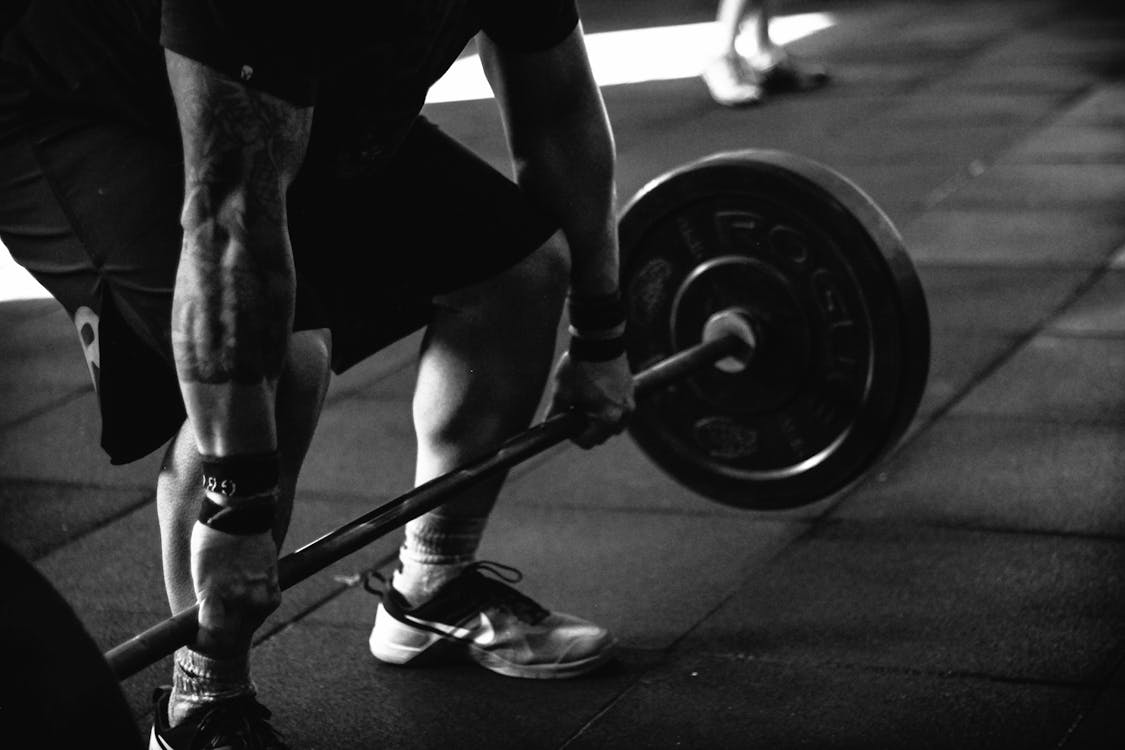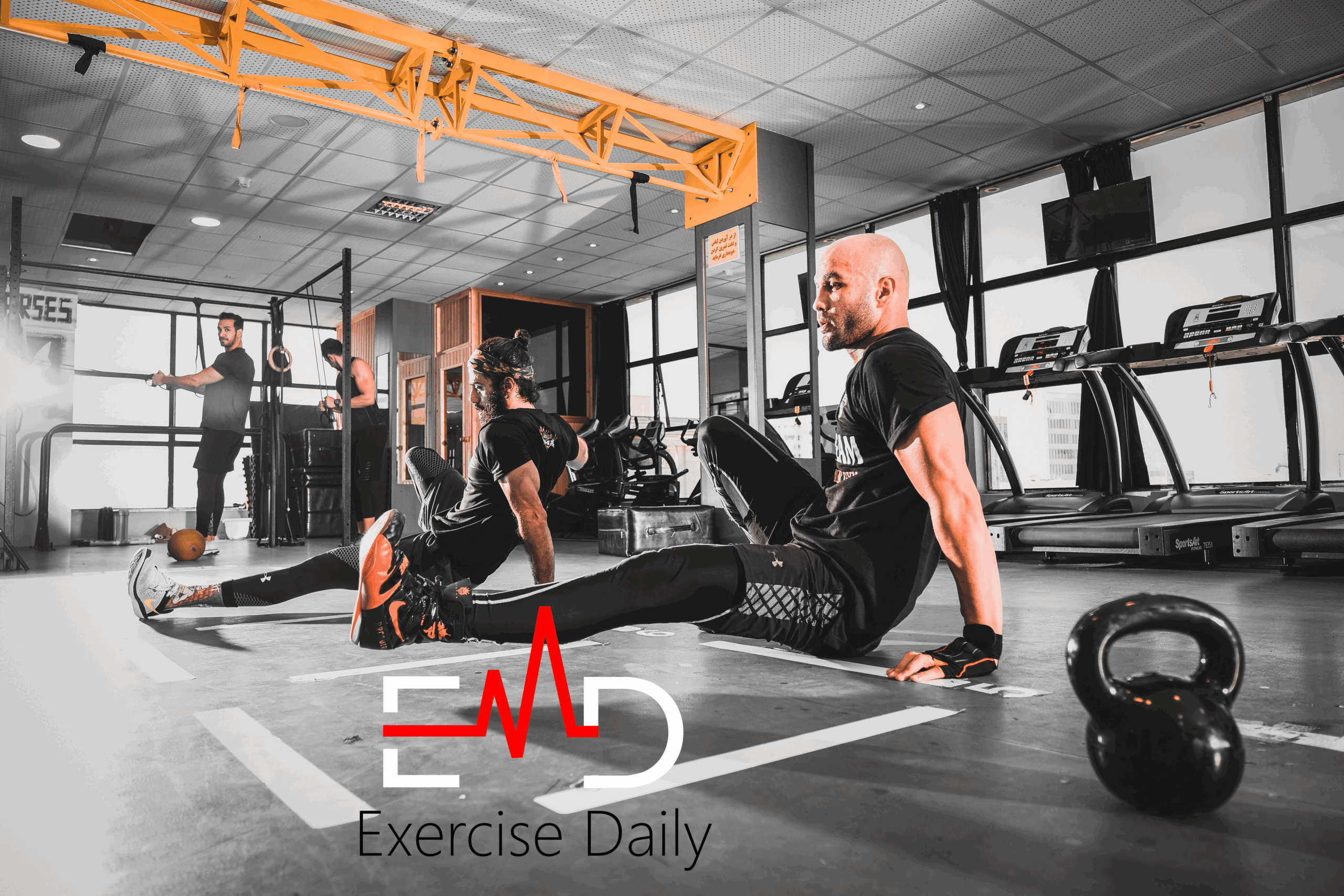Exercise Daily – When it comes to training control one often speaks of aerobic and anaerobic fitness. But what does that really mean? How can you know which area you are currently training in? Which form of training is the right one for your fitness goal? These are a few questions that may come to your mind and we have the answers:
Muscles need energy in order to function. There are two ways to draw energy:
- Aerobic (with oxygen)
- Anaerobic ( without oxygen)
The concept refers to the amount of oxygen consumed by the human body during energy transfer. In this article, you can easily understand the difference between aerobic and anaerobic fitness.
Difference Between Aerobic And Anaerobic Fitness:
We have discussed in detail each and every aspect between the two so that you can easily understand the difference between aerobic and anaerobic fitness. Let’s take a look at the information available and understand how both are different from each other.
Aerobic And Anaerobic Fitness: The Definition
-
Aerobic:

This exercise will help you improve your endurance. Carbohydrates and fatty acids are completely burned and adenosine triphosphate (ATP) is formed. ATP is your body’s fuel. With endurance training or strength endurance training in the aerobic area, you improve your basic endurance, fatigue resistance, and the ability to recover more quickly.
-
Anaerobic:

Anaerobic training is a high burden under the so-called oxygen debt. Carbohydrates of fatty acids are only completely burned and lactate (the salt of lactic acid) is produced as a metabolic product. In anaerobic training, you bring your body to the limit for a short time, for instance with a sprint or strength training with high weight.
Aerobic And Anaerobic Fitness: Energy Metabolism
-
Aerobic Energy Metabolism:
This is when the burning of carbohydrates and fats oxygen is consumed. In this way, energy is gained for muscle work. This works with slow training loads such as slow endurance runs, slow swimming, etc. The body uses the S-fibre or red muscle fibers to help. These muscle fibers get their energy from oxygen, which they take in from the blood. They contract quite slowly and are therefore used for movements and with little effort and high repetition frequency.
-
Anaerobic Energy Metabolism:
With fast intensive training with high-stress intensity, the body requires more energy in a brief period of time. Aerobic energy generation is no longer adequate for this. Therefore, without the use of oxygen, the body now transforms carbohydrates into energy through lactic acid fermentation. This results in the formation of lactate. This refer as anaerobic energy metabolism.
Since the body requires oxygen for this, fats are not burned in this region. The anaerobic energy yield is much smaller and cannot be maintained for an extended period of time. With excessive exertion, the accumulated lactate may cause muscle acidification and a decline in inefficiency.
Typical sports with anaerobic energy metabolism are sprints or endurance runs, weight lifting, or strength training, but also yoga and competitive sports then the body is over its limit for short intense phases.
Anaerobic training uses strong fiber or white muscle fibers which can increase their volume but also consume more energy and tire more quickly.
What Are The Benefits Of Aerobic And Anaerobic Fitness
-
Benefits of Aerobic Fitness:
In aerobic exercise, you can improve your cardiorespiratory fitness and this is also beneficial to many-body systems including lungs, heart as well as circulation. It includes activities such as biking, surfing, walking, and swimming.
- Aerobic exercise increases the body’s oxygen consumption and body increases the breathing and heart rates.
- Aerobic exercise improves your physical fitness and reduces the chance of heart failure.
- It also enhances lung capacity and reduces blood pressure.
- It can also lose your weight and HDL, or increases healthy cholesterol.
- Physical exercise has since been found to lower the overall risk of depression.
-
Benefits of Anaerobic Fitness:
Anaerobic processes dominate the release of energy that the body can use to perform. Anaerobic exercises such as strength and endurance training improve muscle training, strength, strength endurance, and body size.
- This involves doing high-intensity exercises for a short period of time usually for a few seconds to minutes.
- Regular weight training can improve muscle strength.
- Anaerobic exercise can also reduce the chances of developing osteoporosis.
- Anaerobic exercise and other resistance activities will help the bones get stronger and denser.
- It also increases your metabolism and maintains a healthy weight.
- With the help of aerobic exercise, the lactic threshold rises and it also fights depression.
Aerobic And Anaerobic Fitness: Training Methods
There are various training methods for aerobic and anaerobic fitness. This question is where you will understand the difference between aerobic and anaerobic fitness:
-
Permanent Method:
In the continuous method you train aerobically, it is one of the most frequently used training methods. This type of training helps you to improve your basic endurance and to develop your recovery time positively. The training usually takes place at a constant speed or load over 35 to 90 minutes. The maximum heart rate is between 65 and 80% of your HRmax. This type of training is also known as the continuous endurance method.
However, you can also work with variations so that the continuous method does not become monotonous. Also, remember that with the continuous method you always train with low intensity, over a long period of time, and without breaks.
-
Variable Method:
This training takes place according to the tempo change method. You trained with the planned change in intensity. A unit on the thermometer with the changing speed is conceivable for example alternating 1 minute with 70% HR Max and then with 80% HRmax. Make sure you don’t get into the aerobic area.
How You Can Achieve Your Training Goals?
Basically, you should have a cardiovascular check with your doctor before starting any training. Before you start exercising you must have thought about what goals you want to achieve. Of course, information will help you with which training you can best achieve your goals.
In order to make your endurance training specifically aerobic or anaerobic, you should first determine your maximum exercise intensity. To do this you should calculate your maximum heart rate depending on your age. With a heart rate monitor or fitness tracker, you can monitor and control your training while running or cycling.
In the fitness center, you have various cardio equipment such as an ergometer, cross-training, drawing machine, etc for endurance training. They usually feature the heart rate monitors.
Which Area Is Recommended, For Which Training Target?
The decision for aerobic or anaerobic training depends primarily on the training goals.
For the training goal of burning fat or losing weight and increasing endurance, aerobic training in the lower pulse range is effective for longer training periods.
For increased performance and muscle building aerobic-anaerobic training in the upper pulse range with a shorter training time is recommended.
At the same time, however, it is also true that the two processes of energy generation are not in opposition to one another. But rather complement one another. In any sports practice, both forms are usually combined. Depending on the intensity of the training the body alternates between aerobic and anaerobic phases. In endurance sports, in particular, a clear distinction is often not understandable.
Aerobic And Anaerobic Training: Overview
Type of Energy Generation
- aerobic=with oxygen
- anaerobic=without oxygen
Burned Nutrients
- aerobic=Fats and carbohydrates
- anaerobic=carbohydrates
Training Load
- aerobic=low
- anaerobic=high
Pulse Range
- aerobic=lower pulse range,
- 70-80% of the maximum heart rate
- anaerobic=upper pulse range,
- 80-90% of the maximum heart rate
Involved Muscle Fibers
- aerobic=S fibers (red muscle fibers)
- anaerobic=F-fibers (white muscle fibers)
Typical Sports
- aerobic=light endurance sports:
- jogging, swimming, etc.
- anaerobic=Sprints, strength training,
- competitive sports, etc.
Training Goal
- aerobic=Burning fat / losing weight,
- increasing endurance
- anaerobic=Performance increase, muscle building
Training Duration and Intensity
- aerobic=longer duration of training at low intensity
- anaerobic=shorter training duration at high intensity
Which is better? Aerobic or Anaerobic!

Aerobic and anaerobic activities are also beneficial to one’s fitness. Cardiovascular endurance improves in aerobic exercise, while anaerobic exercise focuses on the muscle ability. The World Health Organization recommends a week of aerobic and anaerobic activity. It makes the following general guidelines for stable people between the ages of 18 and 64.
- Aerobic moderate at least 150 minutes of physical exercise or 75 minutes of aerobic intense physical activity each week, with the physical activity or an equal makes of moderate and vigorous physical activity.
- Aerobic activities should last at least 10 minutes each.
- Exercise can provide additional health benefits such as further improving bone health, muscular and cardiorespiratory fitness.
- It reduces the risk of NCDs and depressions also.
- Adults should aim for 300 minutes of aerobic mild physical activity per week or 150 minutes of aerobic intense physical activity.
- Muscle-strengthening or anaerobic exercises that work all major muscle groups such as thighs, hips, back stomach, chest, shoulders, and arms can be performed twice or week a more.
Risk Involved with Aerobic and Anaerobic Fitness
Fortunately, there is no risk doing these exercises, it offers you benefits only. Routine aerobic and anaerobic fitness will help you prevent major health issues like diabetes, heart disease, stroke, hypertension, and some cancer.
If you only train in one endurance range your body will get used to this stress and stay at the level it has reached. Balance training is characterized by the fact that it is varied and balanced. If you design your training plan aerobically and anaerobically you will achieve the best training results in endurance training and strength training.
Final Words:
We ensure that this article includes everything you need to know. Hopefully, now you must have understood the difference between aerobic and anaerobic fitness. You can give us your feedback about the article, we really appreciate it.
Besides, if you are on a weight loss program, here check out the best nutrition shakes that will be effective for your weight loss.





